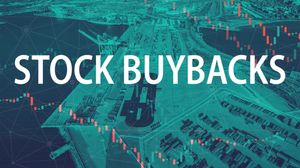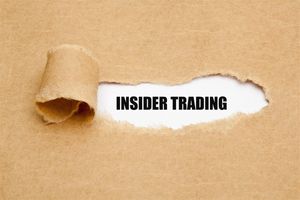
The Federal Reserve is currently caught in a precarious balancing act, navigating a complex economic landscape defined by persistent inflation, a softening labor market, and mounting pressure to adjust interest rates. Wall Street is eagerly anticipating a series of rate cuts, with a strong consensus forming around a September 2025 reduction. However, the central bank's cautious approach, driven by stubborn inflationary pressures—particularly in shelter costs—and the impact of trade policies, suggests that these anticipated cuts may be delayed or more gradual than investors hope. This dilemma poses significant questions for market stability and economic growth as the U.S. heads into late 2025 and beyond.
The stakes are exceptionally high. On one hand, maintaining higher interest rates for too long risks stifling economic activity and exacerbating a weakening labor market. On the other, premature or aggressive rate cuts could reignite inflationary pressures, undoing the progress made in recent years. This tightrope walk requires the Fed to meticulously analyze incoming economic data and communicate its intentions clearly to a market brimming with both optimism and underlying anxiety.
What Happened and Why It Matters: The Fed's Cautious Shift
Since initiating an easing cycle in late 2024 with 100 basis points of cuts, the Federal Reserve has held its target federal funds rate steady at 4.25%-4.50% for several consecutive meetings in 2025. This pause reflects a strategic "wait-and-see" approach, with policymakers grappling with the nuances of a challenging economic environment. The core of this caution lies in the Fed's dual mandate: achieving maximum employment and maintaining price stability, targeting a 2% inflation rate.
Several key indicators have influenced the Fed's circumspect stance. Inflation, particularly the core Personal Consumption Expenditures (PCE) index—the Fed's preferred gauge—has remained stubbornly above its 2% target, hovering around 2.7%-2.9% in the first half of 2025. New tariffs, imposed by the U.S. administration, have introduced an additional layer of complexity, with some Fed officials noting their potential to fuel persistent inflation and delay progress towards the target. Concurrently, the labor market, while showing resilience, has exhibited clear signs of cooling. Nonfarm payroll gains have slowed significantly, with the July 2025 report showing a mere 73,000 jobs added and substantial downward revisions to prior months. Job openings have also declined to near a four-year low, pushing the unemployment rate slightly higher to around 4.2% by July 2025. This weakening in the labor market has become a compelling argument for considering rate cuts.
The timeline of the Fed's discussions reveals a gradual shift towards a more dovish outlook. After projecting fewer rate cuts for 2025 in December 2024, the Fed kept rates steady through its March, May, and July 2025 meetings, citing elevated uncertainty and increased risks to both inflation and employment. However, a significant turning point came with Federal Reserve Chair Jerome Powell's Jackson Hole speech on August 22, 2025. Powell hinted at a potential September rate cut, acknowledging increasing "risks to employment" and a "shifting balance of risks." This was widely interpreted as a "dovish pivot" by the markets. Further bolstering this sentiment, Governor Christopher Waller, who had previously dissented for a cut in July, explicitly called for a September rate cut in late August and early September, suggesting multiple cuts over the next three to six months.
Market reactions have been pronounced. Following Powell's Jackson Hole remarks and subsequent weak labor data, equity markets generally cheered, with the S&P 500 (SPX) jumping 1.3% immediately. Growth-oriented sectors, particularly technology, have seen a boost. Bond yields have fallen in anticipation of cuts, and mortgage rates have shown relief, with the average 30-year fixed mortgage rate dropping to a 10-month low of 6.56% in late August. The U.S. dollar index also experienced a notable decline, consistent with expectations of interest rate reductions. Analysts, including those from Goldman Sachs Research and J.P. Morgan, are now forecasting multiple 25-basis-point cuts through the remainder of 2025 and into 2026.
Winners and Losers in a Shifting Economic Landscape
The Federal Reserve's rate cut dilemma, characterized by potential delays, persistent inflation, and economic uncertainty, creates a clear divergence in fortunes across various sectors and public companies.
The Beneficiaries of Higher-for-Longer or Gradual Easing
Companies and sectors poised to benefit in this environment often possess strong pricing power, stable demand, or a direct linkage to commodity prices.
- Financial Sector (Banks): While initial rate cuts can squeeze Net Interest Margins (NIMs), a prolonged period of higher rates or a very gradual easing can initially sustain or even boost banks' profitability. Diversified institutions like JPMorgan Chase (NYSE: JPM) can leverage various fee-based services, making them resilient. Mastercard (NYSE: MA) similarly benefits from diversified income streams. Online banks like SoFi (NASDAQ: SOFI), if they can manage deposit costs effectively, stand to gain if rates decline steadily, reducing their funding costs. Investors in floating-rate loans, such as leveraged loans and mortgage-backed securities, also see increased returns with higher rates, helping offset inflation.
- Energy and Materials Sectors: These sectors inherently benefit from inflation, as their profitability is tied to the price of commodities. Companies like NRG (NYSE: NRG) (an energy company) see their revenues increase directly with energy prices, providing a natural hedge against rising costs.
- Companies with Strong Pricing Power & Consumer Staples: Brands with strong market positions, like Nike (NYSE: NKE) or Tesla (NASDAQ: TSLA), can more easily pass on rising input costs to consumers without significant loss of demand. Consumer staples companies (e.g., Procter & Gamble (NYSE: PG), The Coca-Cola Company (NYSE: KO)) are generally resilient, as demand for their essential products is less sensitive to economic fluctuations or price increases, though they can face margin pressure from rising input costs.
- Real Estate Owners (with fixed-rate debt) and Specific REITs: Existing property owners with fixed-rate mortgages can see their real income rise as rental rates increase with inflation, while the real value of their debt diminishes. Industrial REITs, such as Prologis (NYSE: PLD), benefit from ongoing e-commerce demand for warehouse space. Data centers also remain a high-growth area.
Those Facing Headwinds from Delayed Cuts and Inflation
Conversely, highly leveraged companies, rate-sensitive sectors, and those reliant on consumer discretionary spending will likely face significant challenges.
- Highly Leveraged Companies and Growth Stocks (especially Technology): Higher-for-longer borrowing costs increase debt servicing expenses, reducing profitability. Growth stocks, particularly many smaller Technology companies (e.g., those primarily listed on NASDAQ), which rely heavily on future earnings potential discounted to the present, see their valuations diminish as higher interest rates increase the discount rate. However, large, well-established tech giants with strong balance sheets, like Microsoft (NASDAQ: MSFT), may still perform well due to their robust cash flows and AI-driven demand.
- Real Estate (Construction, Mortgage Lenders, Experiential REITs): Elevated interest rates significantly inflate mortgage and financing costs, dampening demand for both residential and commercial properties. Construction projects become less viable due to increased capital and material costs. EPR Properties (NYSE: EPR), an experiential REIT focusing on assets like movie theaters, is highly sensitive to interest rates as its growth strategy relies on affordable capital for acquisitions and development.
- Consumer Discretionary Sector: Persistent inflation, particularly in essential goods and shelter, erodes consumers' disposable income. Higher borrowing costs for mortgages, auto loans, and credit cards further constrain spending on non-essential items, impacting industries like retail, travel, entertainment, and luxury goods. This affects restaurants and hospitality groups (e.g., Schlow Restaurant Group) and luxury retailers.
- Small Businesses: These are disproportionately impacted by increased borrowing costs, restricted access to credit, and squeezed margins from rising raw material, wage, and overhead costs.
- Sectors Vulnerable to Tariffs (e.g., Apparel, Footwear, Household Goods): Trade policies and tariffs directly inflate prices for imported goods and can disrupt supply chains. Retailers and manufacturers in these sectors that rely on imported products face significant cost pressures, which are often passed on to consumers, further eroding purchasing power.
The impact of persistent shelter costs is particularly acute, as it reduces consumer discretionary spending, exacerbates housing affordability crises, and, alongside high interest rates, can deter new construction, creating a self-reinforcing cycle of higher prices.
Industry Impact and Broader Implications: A Complex Web
The Fed's rate cut dilemma extends far beyond simple interest rate adjustments, weaving into broader industry trends, creating ripple effects across global markets, and raising critical policy questions. The central bank is operating within a challenging macroeconomic environment where conflicting signals test its ability to achieve a "soft landing."
The broader economic landscape is characterized by sticky inflation, still above the 2% target, alongside a discernible softening in the labor market. Monthly job additions have decreased, job openings have fallen, and the unemployment rate has gradually risen. This combination creates a scenario where the Fed must balance controlling prices with preventing a significant economic downturn. Decelerating U.S. real GDP growth, partly influenced by higher tariffs (which reached 18.6% in 2025, the highest since 1933), further complicates this balance, introducing a potential "stagflationary" dynamic where prices rise amidst slowing growth.
The ripple effects of the Fed's stance are diverse. Industrials and the energy sector could benefit from cheaper capital, as could homebuilding due to anticipated lower mortgage rates stimulating demand. Conversely, utilities and real estate could face challenges if long-term bond yields increase, making their income streams less attractive. The technology sector, surprisingly, has historically underperformed the S&P 500 (SPX) in the six months following the first Fed rate cut, potentially due to higher borrowing costs or a market shift towards more defensive plays. Globally, lower U.S. interest rates can influence capital flows, commodity prices, and international trade. However, U.S. tariffs have already disrupted global supply chains, reducing real GDP growth in emerging markets by 0.5 percentage points for 2025-2026, creating immediate risks for their equities.
Beyond interest rates, the dilemma has significant regulatory and policy implications. The interaction between monetary and fiscal policy is paramount, particularly regarding the impact of U.S. tariffs on inflation and economic growth. These tariffs can drive up consumer prices while suppressing long-term growth, making the Fed's job more arduous. There is also a debate about the Fed's expanded toolkit, with some arguing for a focus on "appropriate financial conditions" rather than solely the policy interest rate. Furthermore, the Fed's independence, a cornerstone of U.S. economic stability, is facing increasing political pressure. Public demands for aggressive rate cuts from the administration, coupled with the Fed's dual role as a bank supervisor and monetary policymaker, raise questions about its autonomy and potential conflicts of interest. The use of emergency liquidity measures post-bank failures, which effectively countered the disinflationary effects of its own rate hikes, has prompted calls to reconsider its regulatory authority.
Historically, the current environment evokes comparisons to the "Great Inflation" of the 1970s, a period of stagflation fueled by politically influenced expansionary policies. This serves as a cautionary tale against premature easing that could entrench higher inflation expectations. However, some also point to the 1995 rate cut cycle, which involved a "soft landing" and saw healthcare and telecommunications as top performers. The post-COVID inflation surge also highlighted how prolonged low rates could lead to persistent high inflation, straining household budgets. These historical precedents underscore the delicate balance the Fed must strike to avoid past pitfalls while navigating contemporary challenges.
What Comes Next: Navigating Uncertainty
The coming months will be a period of significant transition and potential volatility as the Federal Reserve attempts to navigate its rate cut dilemma. Short-term and long-term possibilities for the U.S. economy and financial markets are diverse, with scenarios ranging from a controlled "soft landing" to a more challenging recessionary environment.
In the short term (late 2025), the U.S. economy is expected to experience mixed signals. While Q2 2025 saw robust GDP growth, the full year is projected to slow to 1.4%-1.7%. Consumer spending may moderate due to a cooling labor market, tariff-induced inflation, and rising credit card delinquencies. The labor market is likely to soften further, with some states already experiencing or nearing recessionary conditions. For financial markets, an initial positive surge in equities, particularly growth-oriented sectors like technology, is expected following a September rate cut. Bond yields are likely to fall, and the U.S. dollar may weaken, benefiting gold prices. Investors are advised by BlackRock to consider shifting out of cash into bonds, diversifying with alternatives, and maintaining an equity overweight, favoring U.S. large caps. Small-cap stocks (Russell 2000), which thrive on cheaper credit, could also see outperformance. Businesses will need to adapt to persistent tariff impacts on costs and margins. Emerging markets could see capital inflows, but U.S. tariffs also pose near-term risks to their equities.
Looking into the long term (2026 and beyond), the U.S. economy is broadly expected to rebound, with real GDP growth accelerating to 2.0-2.5% by mid-2026, assuming looser monetary policy and potential tax cuts. Inflation is projected to converge towards the 2% target in the second half of 2026. Sustained lower rates, if a soft landing is achieved, could foster robust corporate investment and earnings growth, supporting long-term equity performance. S&P 500 (SPX) earnings per share are projected to grow significantly in 2026, driven partly by the transformative potential of AI. Investors may continue to shift towards riskier assets, and the housing market could see sustained demand and price appreciation. Adaptability and disciplined rebalancing will be crucial for investors, along with continued diversification. Geopolitical risks and global monetary policy divergence will continue to shape opportunities in emerging markets.
Several potential scenarios loom large:
- Soft Landing (Base Case): This scenario involves a mild economic slowdown in 2025 followed by a recovery, with inflation moderating without a severe recession. GDP growth slows but avoids contraction, and the labor market introduces slack, allowing wage growth to moderate. This favors bonds over equities initially, but growth equities and high-yield debt could see enhanced returns as growth stabilizes.
- Recessionary Scenario (Elevated Risk): Some indicators suggest a heightened risk of recession, with forecasts placing odds as high as 50-50, potentially triggering in Q4 2025 or winter 2025-2026. Triggers could include a sharp bond market reaction to fiscal policy or re-accelerating inflation. In this scenario, bonds would likely outperform equities, and defensive sectors like utilities and consumer staples would be favored.
- Stagflationary Scenario: A less desirable outcome, this involves rising unemployment and persistent high inflation, potentially exacerbated by tariffs. This would necessitate defensive strategies and hedges against inflation.
- Higher-for-Longer Rates: If inflation persists or re-accelerates, the Fed might maintain higher interest rates for longer, pressuring growth stocks.
- Political Interference: Public and administrative pressure on the Fed could lead to a more dovish stance, potentially deeper and faster rate cuts from Q2 2026, irrespective of economic fundamentals.
Ultimately, the coming quarters will demand agility from businesses and investors, with strategies needing to adapt rapidly to incoming economic data, evolving Fed policy, and geopolitical developments.
Conclusion: Navigating the New Normal
The Federal Reserve's rate cut dilemma underscores a pivotal moment for the U.S. economy and financial markets. The central bank's delicate task of taming persistent inflation while supporting a softening labor market is a complex balancing act that will shape market stability and economic growth for the foreseeable future. While Wall Street largely anticipates rate cuts beginning in September 2025, the pace and extent of these reductions remain uncertain, influenced by stubborn inflation—especially in shelter costs—and the impact of trade policies.
The market outlook suggests a period of transition. Equity markets are expected to perform well during a rate-cutting cycle, particularly if a "soft landing" is achieved, with potential for broader gains beyond large-cap technology. Fixed income is poised to benefit from falling yields, though investors will need to be discerning about duration. Mortgage rates and other borrowing costs should gradually become more affordable, stimulating economic activity. However, the path is fraught with risk, including the specter of recession, persistent stagflationary pressures, and the unpredictable influence of political factors.
The significance of the Fed's decisions cannot be overstated. They will dictate borrowing costs, influence investment flows, and ultimately determine whether the U.S. economy can achieve sustained, moderate growth without reigniting inflation. The increasing political scrutiny on the Fed's independence also raises long-term questions about its autonomy and the potential for policy decisions to be influenced by external pressures.
For investors, the coming months demand vigilance and a nuanced approach.
Key takeaways for strategic planning include:
- Economic Data is King: Closely monitor core inflation figures (CPI and PCE), labor market reports (unemployment, payrolls, job openings), and economic growth indicators (GDP, retail sales). These will be the primary drivers of Fed policy.
- Fed Communications: Scrutinize all FOMC announcements, meeting minutes, and speeches by Fed officials for clues on their evolving stance and future policy trajectory.
- Geopolitical and Trade Developments: The impact of tariffs on inflation and supply chains remains a critical wildcard. Any new trade policy announcements could significantly alter the economic outlook.
- Diversification and Rebalancing: In a volatile environment, maintaining maximum portfolio diversification across asset classes and geographies is crucial. Regular rebalancing can help capitalize on market shifts and manage risk.
- Bonds over Cash: As cash yields are expected to fall, consider targeted shifts from high cash holdings into short-to-intermediate duration bonds and high-quality corporate credit to capture higher yield potential.
- Quality Equities: While maintaining exposure to quality equities, particularly U.S. large caps, be prepared for a potential rotation towards small-cap and value sectors as rates come down.
The landscape is complex, but understanding the Fed's dilemma, tracking key indicators, and adopting a flexible investment strategy will be paramount for navigating the evolving market conditions in the months ahead. The goal is to weather the current uncertainty and position portfolios for long-term resilience and growth.






